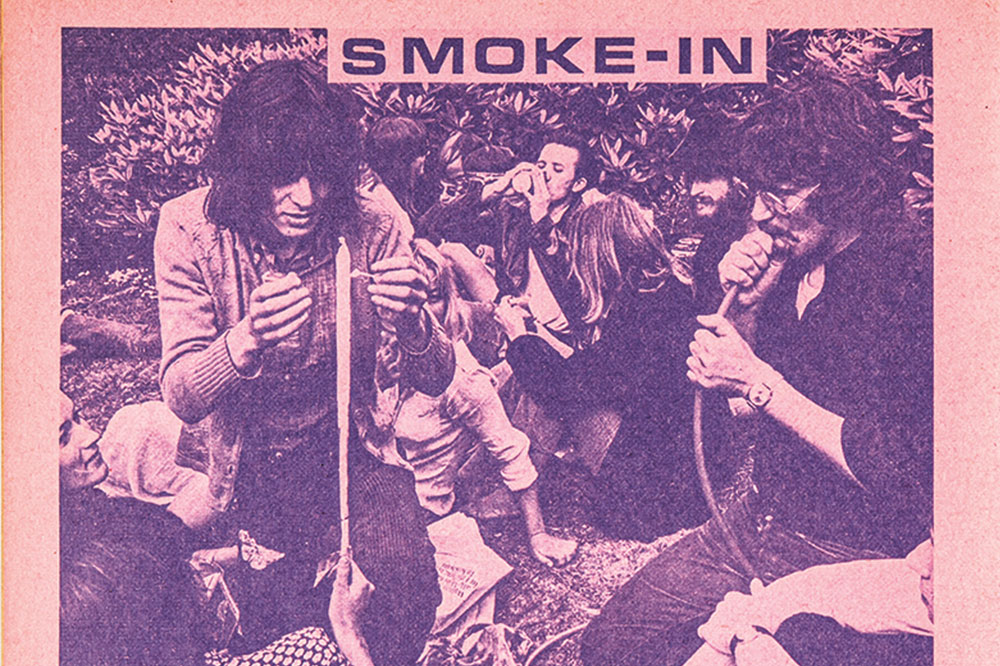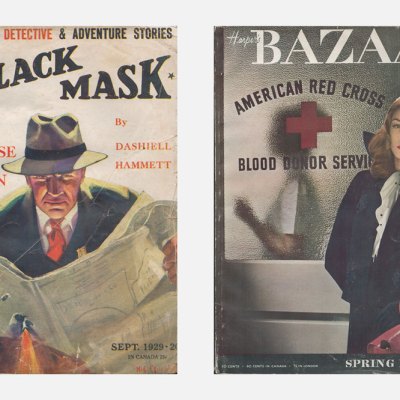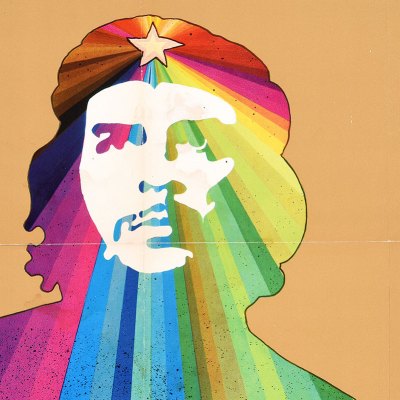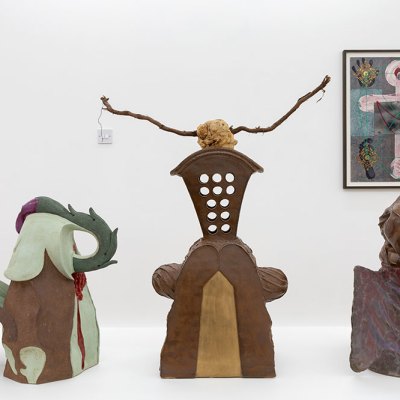From the June 2023 issue of Apollo. Preview and subscribe here.
In California, you can visit a commercial marijuana ‘dispensary’ and get precisely the high you are after. Do you want to giggle with your room-mate? Do you want to ponder the deeper aspects of life, the solar system, the meaning of existence? Or would you like to get flattened by a damn bulldozer and wake up next Thursday in a place you’ve never even seen before? It’s all up to you!
 In 1968 it was a different matter. People were smoking a lot of dope, of course, and the US authorities didn’t like it. Arrests were common for possession of minor amounts of grass (hashish never figured so much in the lives of American smokers – too strong, too expensive and, really, too exotic). But there, within the fumes, some people were thinking about what the future of marijuana might be, and a movement was born to champion and free Mary Jane from the shackles of ignorance and jurisprudence. Like any good ’60s movement, it had a lively press. Heads Together is a fascinating, comprehensive chronicle of the magazines and newspapers of pot. Selecting this material must have been a real head-nip for the editor; for the reader, leafing through its prismatic ephemera can get you a little high.
In 1968 it was a different matter. People were smoking a lot of dope, of course, and the US authorities didn’t like it. Arrests were common for possession of minor amounts of grass (hashish never figured so much in the lives of American smokers – too strong, too expensive and, really, too exotic). But there, within the fumes, some people were thinking about what the future of marijuana might be, and a movement was born to champion and free Mary Jane from the shackles of ignorance and jurisprudence. Like any good ’60s movement, it had a lively press. Heads Together is a fascinating, comprehensive chronicle of the magazines and newspapers of pot. Selecting this material must have been a real head-nip for the editor; for the reader, leafing through its prismatic ephemera can get you a little high.
These publications were lovingly produced in every format available at the time – mimeograph, spirit duplicators and xerography, as well as some pretty classy four-colour printing on gloss paper. The art was as various as those involved: to put it mildly, a lot of these people thought they could draw like Robert Crumb, but none of them could. A lot of them thought they could reproduce the vibrating, complex, psychedelic alphabets of the famed San Francisco poster artists Wes Wilson and Alton Kelley, but they couldn’t. (I tried to decorate my eighth-grade notebook in this way and I failed.) And a lot of people just thought they were Aubrey Beardsley.
The more talented graphic artists of the alternative press at this time were rediscovering many of their antecedents: swirling art nouveau in the advertisements of Alphonse Mucha, Moorish design, Edwardian lettering. The winsome toddler on the old ‘Mary Jane’ candy label became a mascot of pot. Other American cultural icons were appropriated, reimagined and directly mocked, too, leading to, for instance, the furore over Air Pirates Funnies, which meticulously detailed the stoned sex-lives of many beloved Disney characters.
On the cover of a mag called Kaleidoscope are Casper the Friendly Ghost, Little Orphan Annie and Dennis the Menace (the American one), all lying on opium den-style bunks, smoking. A limp black arm with a white-gloved hand hanging from an upper mattress suggests that HRH Mickey Mouse himself is experiencing a massive rush. The cover is rendered in off-register red and blue, suggesting either that the magazine might have been sold with cardboard 3D spectacles, or that they were going for the look of LSD ‘blotters’.
A girl with long hair flies through the air on a spliff; a Turkish man’s head is the bowl of a water pipe and his belly is bubbling. Montage abounds: cherubs, originally carrying god knows what, now shoulder a giant joint. Fairies suspend a three-foot reefer and a lighted match for a crouching naked beardie. There are lots and lots of pot-friendly animals. Dogs, cows, cats, horses, tortoises and turkeys exhort us to get high. An elephant uses his trunk as a bong! No problem. John Tenniel’s caterpillar pops up quite a bit, with his hookah. Even Charles M. Schulz’s Snoopy was dragooned in, sporting long hair and a leather head-band. Photography too was employed with the proper grit of the age. Can you imagine what would happen today if you published a cover image of a little kid happily toking on a joint?
Oz Magazine (London), Issue 13 (1968), art by Martin Sharp. Courtesy Edition Patrick Frey

The underground press was highly organised. The Underground Press Syndicate and the Liberation News Service, modelled on traditional newspaper features services, facilitated the sharing (on paper) of articles and images among the ‘Movimento Ippi’. Marijuana was part of civil rights, the women’s movement, student unrest, protests against the Vietnam War. People don’t talk about the problem of ‘The System’ any more, because over the last 50 years they’ve lain down and become part of it. So the political language in these papers is refreshing: it could once again become useful. A paper called Other Scenes proclaimed, ‘POTSMOKING WILL STOP THE WAR IN VIETNAM.’ Hmm. Instead, now, more sinister drugs are cynically used in the military to enable massacres.
Because the thrust of the marijuana movement was about personal freedom (and not getting caught), many magazines and books concerned themselves with growing your own, viz. The Complete Cannabis Cultivator, by an oracle named ‘Mary Jane Superweed.’ There was a hashish preparation manual titled Leaves of Grass, a nod to Walt Whitman’s affinity for pot. Here is some sage advice from The Lazy Man’s Guide to Growing Marijuana: ‘It is quite possible to smoke green leaves but they won’t stay lit at all and you wind up with a lot of juice in your pipe.’ Gross, man!
The point is that all of this was kind, and kindly meant, decades before skunk put the lie to the idea of the mellowness of the pot user, and crack and fentanyl overwhelmed the entire nation. As David Jacob Kramer says in his pungent commentary, the marijuana advocates foresaw that if pot were not decriminalised in the right way, it would lead to a world in which vast corporations took over the enterprise of marijuana production and distribution.
And that, of course, is exactly what has happened: small growers have been put out of business by high-tech farms of almost unbelievable size and wealth. Kramer concludes, ‘Like an old roach, pot as a symbol of civil disobedience has long ceased to smolder. The imagery in this book pertains to a time when pot was smoked with optimism.’ Pot was fun. That is what it was there for. Do you remember fun?
Heads Together: Weed and the Underground Press Syndicate 1965–1973, edited by David Jacob Kramer is published by Edition Patrick Frey.
From the June 2023 issue of Apollo. Preview and subscribe here.



